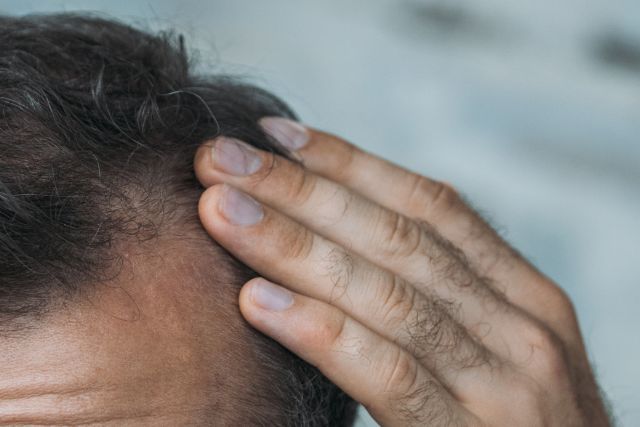EADV Congress 2025 session spotlight
Focus on
- Thu 18 Sep
- 10:15 - 11:45 CEST
- Paris Nord room
Presentation details:


Androgenetic alopecia in children and adults
Luis Sanchez, Mexico
Androgenetic alopecia (AGA) is the most prevalent type of hair loss recorded after adolescence. It is characterized by miniaturization of the terminal hairs. This is a gradual process that starts with hair variability and a decrease number in hairs per unit.
There is a genetic predisposition and hormonal effect, up to with 83% of cases have a positive family history. Miniaturization occurs because of a sensitivity for androgens of the hair follicles in affected areas. High levels of androgens are not expected but in some cases there is an underlying condition such as metabolic syndrome, polycystic ovary syndrome, insulin resistance (IR), or endocrine disruptors triggering hyperandrogenism.
Diagnosis is clinical and trichoscopy is consider an important tool not only for identifying early cases but for monitorizing treatment plans. Trichoscopic findings in AGA are: (1) follicular miniaturization; (2) variability in hair shaft thickness of more than 20%; (3) increased proportion of vellus hair; and (4) other features such as single-hair units, wavy hair, peri- follicular pigmentation, yellow dots, and thin arbor- izing vessels.
Female patients with AGA (FAGA) usually present diffuse thinning at the crown and preservation of the frontal hairline, while men patients with AGA (MAGA) tend to present varying degrees of biparietal recession and hair loss on the crown.
There are multiple treatment options for AGA but topical minoxidil and oral finasteride are the only approved treatments. Oral Dutasteride are a common non-approved treatment used por AGA. Also, there are no standard therapy yet approved for the pediatric population, but topical and oral minoxidil have the safest profiles. Topical 5α-reductase inhibitors are also used. Emergent treatments as intralesional dutasteride, other topical and oral antiandrogens as spironolactone, bicalutamide as well as low level light therapy, PRP and exosomes are now considered for AGA patients. All of the above treatment options will be discussed.
Understand the Pathophysiology:
To review the current understanding of the pathophysiological mechanisms underlying androgenetic alopecia (AGA) in both adolescents and adults.
Recognize Clinical Presentations and Diagnostic Approaches:
To differentiate between early-onset and adult-onset AGA and to outline evidence-based diagnostic strategies, including trichoscopy.
Review Current Treatment Modalities:
To discuss first-line and emerging treatment options for AGA, including topical and systemic therapies (e.g., minoxidil, finasteride, dutasteride, low-level laser therapy, PRP).
Address Age-Specific Considerations:
To explore the unique psychosocial and therapeutic considerations in adolescent versus adult patients, including safety, efficacy, and long-term management.
Integrate Practical Management Algorithms:
To provide dermatologists with up-to-date, practical treatment algorithms tailored to different stages and severities of AGA.
Presentation details:


Dissecting cellulitis and folliculitis decalvans
Awatef Kelati, Morocco
Dissecting cellulitis (DC) and folliculitis decalvans (FD) are both primary neutrophilic cicatricial alopecias affecting the vertex and occipital area. Management of these chronic inflammatory dermatoses is based on antiinflammatory drugs with variable results. The earlier the diagnosis, the better the therapeutic response.
Dissecting cellulitis has been considered to be part of the follicular occlusion tetrad along with hidradenitis suppurativa, acne conglobata and pilonidal cyst, suggesting a common pathogenic mechanism: deep follicular occlusion, follicular rupture, then follicular infection. It is characterized by abscesses, nodules, fistulas, and scarring alopecia. Treatment options include systemic antibiotics, oral retinoids, biologics, procedural treatments, combination agents, and topical treatments. Oral retinoids and photodynamic therapy were the most studied and showed good results for improving symptoms, however, disease recurrence is a common finding.
Folliculitis Decalvans (FD) pathogenesis is not fully understood, but a Staphylococcus aureus infection with a break in the epidermal barrier integrity, and a dysfunction of the host’s immune response seem to play an important role, it is characterized by a chronic and relapsing course.
Clinically, FD presents with scarring alopecic patches with follicular pustules, crusts and tufted hairs. Management of FD is challenging since it is difficult to establish a successful and long-lasting therapy. Oral antibiotics are widely used with variable response in addition to topical and intralesional steroids, biologics were used for recalcitrant disease.
For both FD and CD, treatment extended beyond the resolution of the manifestations may be considered to avoid recurrences.
Learning objectives:
- Early diagnosis of dissecting cellulitis (DC) and folliculitis decalvans (FD) for better treatment outcomes
- Treatment options of FD and DC according to the stage of the disease
- How to optimize treatment and to avoid recurrences
Presentation details:


Alopecia areata in children and adults
David Saceda Corralo, Spain
The therapeutic landscape of alopecia areata has been revolutionized with the advent of oral JAK inhibitors, offering new hope for both children and adults affected by this challenging condition. In this session, we will explore the latest data from clinical trials and real-world experience, translating them into practical insights for everyday dermatology practice.

